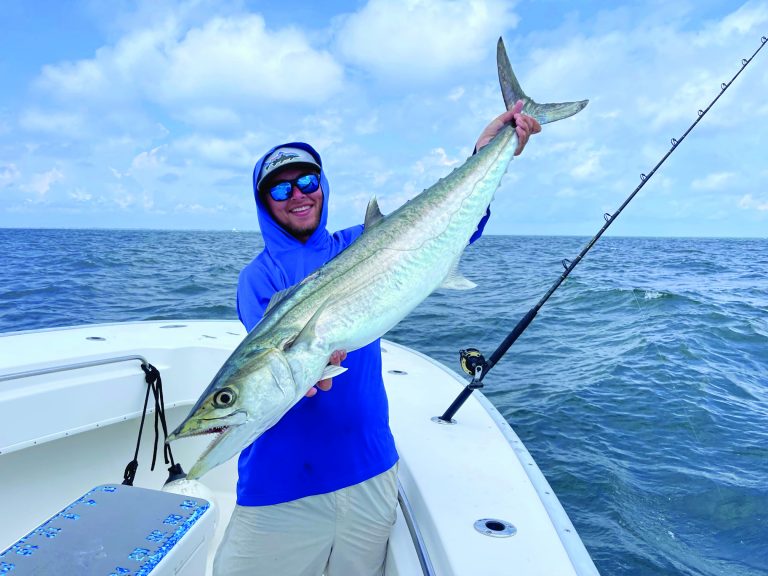Superstitions of the Sea: Nautical Beliefs Sailors Still Swear By
Why sailors trust in rituals, luck and lore to navigate the unpredictable ocean
Story by Lily Whitener
Unpredictable waves, daunting winds and a mysterious abyss below. The ocean can be unforgiving to those who venture out on it. For sailors these menacing characteristics are everyday challenges. From not leaving port on Fridays to avoiding whistling, sailors of all types have amassed a lifetime of superstitions that justify the way they voyage. When working in an ever-changing environment like the open sea, there are patterns and behaviors that bring sailors peace of mind.

Tales as old as time
Given that modern civilization was shaped by advancements and discoveries in sailing, some superstitions predate many contemporary nations. Rooted in classical mythology, these beliefs stem from the long, uncertain journeys of sailors on the vast unknown of the oceans. As the Age of Exploration gained momentum in the 17th century, it became customary for sailors in Great Britain to christen their vessels by breaking a bottle of wine on the ship’s bow before departure. This gesture mirrors that of the ancient Greeks, who would make blood sacrifices to the gods of the sea. The ritual was thought to ensure smooth sailing and good luck for those on board. The idea of luck led some crews to unusual behavior, with some throwing items deemed “unlucky” overboard to protect the ship.
In the 18th century the discovery of Polynesian body art led many sailors to get tattoos, believing them to be good-luck charms. These inky marks served multiple purposes: they represented a sailor’s accomplishments at sea and were believed to offer protection from evil spirits. Common sailor tattoos included pigs, roosters and the nautical star. Pigs and roosters were frequently aboard ships as a versatile source of survival. They were used as food for the crew, and in the dire event of a shipwreck, sailors could float on the crates that held these animals. Having these creatures tattooed on the tops of sailors’ feet was thought to prevent drowning.
From departure rituals to adorning specific symbols, sailors have adopted behaviors to gain a sense of comfort and control amid the unpredictability of the sea. Between the sky, the winds and the atmosphere, sailors had to adapt to all types of weather during journeys across the seven seas. Weather lore has a stronghold in the sailing community and can be seen in long-standing proverbs such as “Red sky at night, sailor’s delight. Red sky in morning, sailors take warning.” Despite being dismissed by some as an old wives’ tale, the saying has scientific validity. A red sky at night means high air pressure is present and stable weather is moving in from the west. A red sky in the morning indicates that a low-pressure system is approaching, bringing rain and changing weather.


Locals know it best
Local sailors here in the Lowcountry know a thing or two about the savageness of fluctuating weather. Grayson Carter, owner of three of the nine remaining Sea Island One-Design sailing skiffs and who has sailing experience dating to the 1970s, remains cautious of the elements. Unpleasant weather can have adverse effects on sailors, crew members and the boat itself. Carter recalls a scary encounter with severe weather during the 2025 James Island Regatta. “We were dealing with one of the Sea Islands that turned over,” he said. The raging storm capsized one of Carter’s boats, the Grey Ghost, resulting in minor bumps and bruises for the skipper and his crew.
Superstitions don’t always revolve around the weather. When asked about his own beliefs, Clay Mobley, a crew member of the Grey Ghost, cites an old wives’ tale. He refuses to bring bananas aboard, believing them to bring bad luck. Beyond bananas, Mobley and the rest of the crew take it a step further: all members wear matching black Chuck Taylor All-Star High-Tops and matching gray shirts when racing. Matching outfits and accessories among crew members are commonly believed to bring good luck to teams in sports like sailing.

Superstitions also arise with pre-departure rituals. Adam Young, an avid Sunfish sailor at the Beaufort Sailing and Yacht Club, spits off the side of the boat before leaving the dock. He laughs as he explains how his pre-race ritual has only intensified over his 14-year sailing career. Young equates his spitting habit to the success of his race. When the race results are less than hoped for, Young wonders whether he forgot to spit.

A superstitious sailor’s survival guide
From sacred animals to sketchy snacks, these age-old beliefs still drift through today’s seafaring circles.
Good luck aboard
Pig and rooster tattoos: These barnyard floaters were believed to keep sailors from drowning during shipwrecks.
Black cats on deck: Unlike their land-based reputation, black cats were considered lucky charms at sea.
Dolphin sightings: Considered a sign of protection and smooth sailing ahead.
Matching crew outfits: Said to strengthen unity and attract good fortune.
Throwing coins overboard: A coin tossed to the sea god was believed to ensure a safe return.
Horseshoes on board: Hung with ends pointing up, they were thought to collect luck and ward off bad spirits.
Bottle-breaking christenings: A modern echo of ancient offerings to sea gods, a shattered wine or champagne bottle means a blessed voyage.
Bad luck on the water
Bananas on board: Blamed for everything from spoiled cargo to attracting venomous stowaways.
Whistling on deck: Said to summon storms and test Poseidon’s patience.
Red sky in the morning: A warning of rough weather ahead (“sailor’s warning.”)
Renaming a boat: Risky business unless you hold a proper renaming ceremony to appease the sea gods.
Fresh flowers on board: Associated with funerals; not the vibe you want at sea.
Killing seabirds: A serious taboo believed to bring misfortune.









